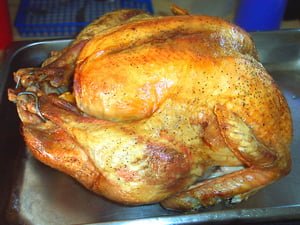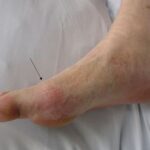Statistically, menopause occurs around age 51, with many women beginning to suffer from a variety of health conditions including the onset of muscle and joint pain and weakness. With the decrease in the body’s production of estrogen, a woman may begin to experience symptoms associated with the development of gout. For menopausal women, understanding the cause and origin of gout, the association of gout to menopause and the prevention and treatment options of gout, will ensure a more pleasant transition through this life changing period.
Considered an over accumulation of uric acid in the synovial fluid of the joint space, gout, in menopausal women, can be a debilitating disease often impairing activities of daily living. As uric acid builds, the connective tissue is affected resulting in significant swelling and pain. Found naturally in the foods, uric acid, prior to menopause in healthy women, would dissolve into the blood stream and passed out of the body through urine. Following menopause, as the estrogen levels decrease, the functionality of the kidneys, in excreting uric acid, is diminished. As a result, the uric acid found in foods may accummulate in the body creating the symptoms of gout.
The most prominent symptom of gout includes the pain and stiffness of joints. For most menopausal women, the pain usually begins in the large toe and then affects the ankles, knees and wrists. With this onset of pain comes swelling and often redness which, when untreated, the uric acid levels will continue to increase resulting in crystal formations which may lead to kidney stones or kidney disease. For menopausal women, the onset of gout may occur at any point in the menopausal process as the kidneys continue to lose the support of the estrogen hormone.
To prevent gout, menopausal women with high uric acid levels should avoid consuming foods such as liver, peas and shellfish including achovies and shrimp. Additionally, the excess use of alcohol, in menopausal women, may play a key factor in the development of high levels of uric acid leading to gout symptoms. Avoiding meat products, high in purine, such as beef, chicken, pork and ham may provide an additional benefit in preventing the onset of gout in menopausal women.
Treating gout includes dietary changes but may also include the use of prescription medications, orally, depending on the degree to which uric acid affects the body. In addition to prescription medicaitons, many menopausal women may also use anti-inflammatories such as ibuprofen, to relieve swelling and pain. Prednisone, or other steroid affiliated drugs, may prove beneficial in improving inflammation when over the counter medications are ineffective.
For women entering into, and passing through, menopause, the variety of new health concerns can become overwhelming. Of these, the development of gout, indirectly related to lowered estrogen levels, can inhibit activities of daily living. Through proper diet, exercise and medication administration, menopausal women, suffering from gout, can restore some degree of normal health and improve the menopausal experience. For more information regarding gout in menopausal women, visit www.familydoctor.org.




